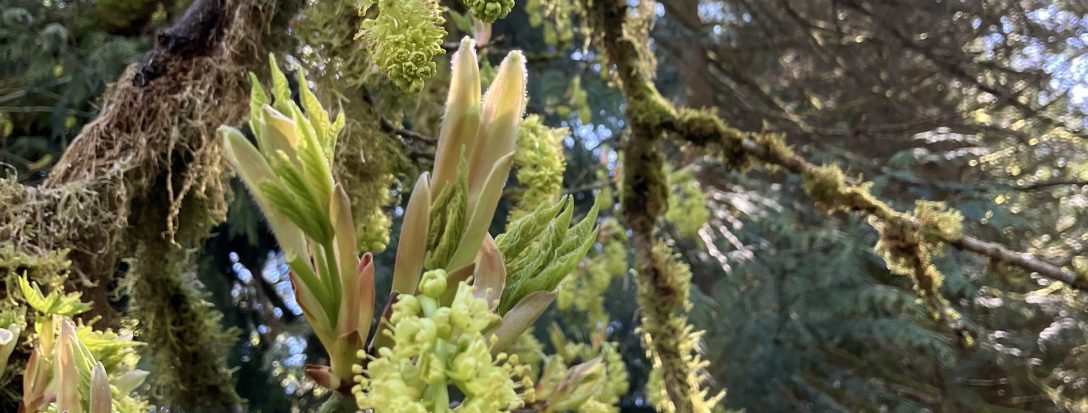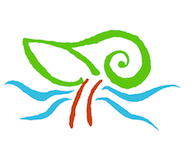With a quick key stroke, or swipe across smart phone screen, GPS can lead most of us to where we are, and where we want to be. Directions are digital, with a robot voice guiding our every turn. This is a far cry from the days of celestial navigation, when most people would rarely, if ever, venture beyond their village world. Now people spend more of their time in a virtual world, leaving navigation to Siri or Google Earth. Many of the following photos are screen shots of Google Earth, so thanks big tech company who can afford to open source satellite imagery of the entire planet.
How many of us really know place, the space we inhabit at a given time? For some, it may be entirely enclosed by man made structure, leaving little connection to the environment. Most of us spend more time staring at a screen, instead of being in the outside world, with all our senses. This neglect of our curiosity, awareness, and disconnect from ecological participation outside, in the natural environment, dulls our senses and erodes our empathy towards ourselves and each other. With the onset of apathy, we’ve forgotten the natural world, and it’s disappearing all around us, at an alarming rate.
One way to slow the degradation, across the earth, is planting forests. We’re not creating them as quickly as we’re destroying them, and that does not bode well for the planet. Here in Washington, where I live, forests are the natural ecology of our Cascadian region, and much of it has been clear cut, at least once, and in many cases twice or more. Logging is a way of life, for many recent generations, and built much of the cities and towns around our state. Anglo Europeans are proud of this historical fact, and still dream of the good old days, when old growth was still standing in massive groves. Colonial lineages thought the woods were endless; forgetting that only a few centuries before, in much of Europe, the forests had been completely cut.

Sadly, we seem not to “know better” now. There is little time taken to reflect on historical lessons, while acting on them to improve the future, and our place in it. That place is connecting, caring, and restoring the environment, which in turn, nurtures and provides for us. EEC Forest Stewardship is on land of Southern Lushootseed speakers, near 1912 Incorporated Duvall, Washington, on a ridge above The Snoqualmie River. Nestled in the foothills of The Cascades, at about 600 feet elevation, this hill side mix of forest and pasture has been agriculturally maintained since the 1970s. Some of the trees date easily to that time, a few are older, but none are 1st or 2nd growth. The forest needs restoration work, and that’s the mission of this stewardship plan.

Pacific Northwest– There’s a beautiful green carpet, you can see best from space, which stretches from northern California to Alaska. In this temperate rain-forest ecosystem, an intact forest canopy is imperative. Most of the developed land within these emerald forests are clear cut and managed as “lawnscapes”. If there is forest, it is usually a few young evergreens which are still mowed beneath to prevent “fire danger”. In urban landscapes, this highly managed savanna look is easy to maintain, but devoid of ecological diversity and forest health.

If you do find your way to an intact old growth stand, which are most plentiful on the peninsula of Washington, then you might get a chance to appreciate the climax environment of biodiversity that our whole western slope, from The Cascades to The Pacific Ocean, were once thickly covered in towering, majestic forest. From high above the earth, it still looks like a dense carpet, but as we get closer in, you’ll soon realize just how much of our forests have been cut away, and never replanted.
West of The Cascades– There are many mountain ranges in Washington, and The Cascades are the most prolific, running along the inland coast from Canada into Oregon. These mountains are responsible for all the rain we get in Western Washington, and are a product of tectonic activity along The Ring of Fire in the greater Pacific. Another great range lies further to the west on our peninsula. The Olympics are isolated, and wild. In the picture below, there’s a heart marking my Roosevelt Elk hunting grounds. That’s where you’ll find the older trees, and denser ecosystem. The gold star shows where EEC Forest Stewardship is located in The Puget Lowland.

Puget Lowland- The picture below is a collage of aerial photograph in the lowlands. See the dark green forests of The Cascades to the right, then the change in shade from thick forest to lighter greens of pasture, lawns, and clear cuts of human sprawl creeping into the foothills, stretching towards Puget Sound where a browning concrete jungle grows higher with each new commercial tower built. The forest is a far off memory along many of the great rivers, where now our food is produced.

Up on the ridges of old fins left from mile of glacial ice, which used to grind along this region, more land was cleared, and continues to be thinned away as developments stretch out from the urban heart of Seattle. The land I steward, and hope to use as a demonstration for other small land owners who wish to develop better stewardship practices on their own parcels, is on the edge of this growing front. It sits along a tributary of The Snoqualmie River, just outside a once sleepy logging town now growing rapidly as a bedroom community for Redmond, Bellevue, and Seattle; all tech cities.

This small 10 acre holding is backed up against the foothills of The Cascades, and Weiss Creek, the small salmon bearing stream that runs through the property, connects us to the great Snoqualmie River below, where all the designated farm land is set aside. We often forget that the flood planes were once forested, just like the rivers of similar size over in Olympic National Park. Because of a long tradition of farming and land alteration to create food security, the established farm land will never be reforested while our minds remain fixated on the past. Over 40% of farming in our county is done outside agriculturally set aside land, meaning much of the small farming in our county is at risk to development.
Washington State is one of the fastest growing populations in the country, and a very progressive state for ecological issues. However, development “progress” usually wins out in the end. The land I’m stewarding is located on the boarder between suburban sprawl and wilderness. Unincorporated King County is shrinking, as more and more people move out of the city, seeking nature, relaxation, and space to grow. The balance between thriving ecology and human encroachment is tipping fast, and not in a sustainable direction. The county is trying to mitigate early habitat desecration by encouraging people with cleared land to replant forests and steward fragile land recovery.
There are numerous land incentive programs available to help support restoration and conservation on private residential property, yet few people take the time to learn about options. EEC Forest Stewardship hopes to cultivate greater awareness of these opportunities, and demonstrates many of the restorative practices used to rebuild native ecology of the region.

